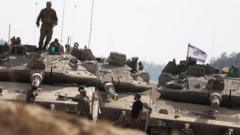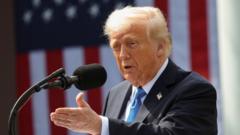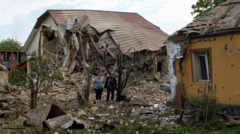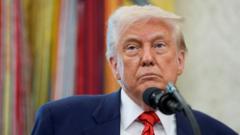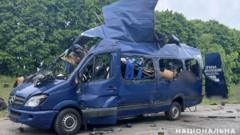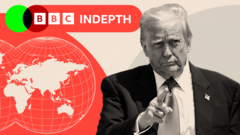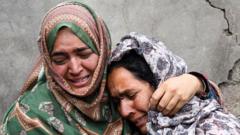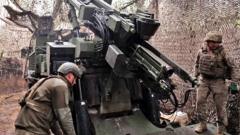The recent four-day conflict between India and Pakistan not only highlighted their longstanding rivalry but unexpectedly positioned China's defense industry as a potential winner, sparking discussions about the performance of Chinese-manufactured jets.**
China Emerges as a Surprising Beneficiary in Recent India-Pakistan Clashes**
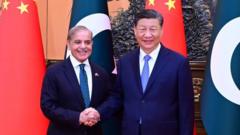
China Emerges as a Surprising Beneficiary in Recent India-Pakistan Clashes**
The latest military altercation between India and Pakistan brings unforeseen gains for China's defense sector, showcasing the effectiveness of its military technology.**
In a remarkable turn of events during the recent four-day hostilities between India and Pakistan, reports suggest that China's defense sector may emerge as a surprising beneficiary. The conflict, which began on May 7 with India's retaliatory airstrikes against what it termed "terrorist infrastructure" in Pakistan, followed the tragic killing of 26 individuals, primarily tourists, by militants in Indian-administered Kashmir.
Following the strikes, recognized as Operation Sindoor by India, both nations engaged in military exchanges involving a spectrum of aerial assaults using advanced fighter jets. India deployed aircraft manufactured in France and Russia, while Pakistan received backing from its home-produced J-10 and J-17 planes, which are co-developed with China. Each nation asserts that their aircraft remained within their borders, engaging in strikes at distance. During these exchanges, Pakistan claimed to have downed multiple Indian planes, including the modern Rafale jets, a statement which India has yet to officially address.
Amidst both nations declaring victories in the skirmish, observers highlight that China's manufacturing prowess underpinned Pakistan's military effectiveness. Reportedly, U.S. intelligence sources noted that Pakistani jets employed Chinese-made weapons, potentially demonstrating their operational reliability in a real combat scenario. This development could propel China's defense industry into the spotlight, with experts likening this moment to a landmark advance for the nation’s military capabilities.
Zhou Bo, a retired Chinese military figure, articulated that the outcome of the air engagements may serve as a significant promotion for Chinese-made military technologies. Indeed, shares for the Avic Chengdu Aircraft Company, responsible for the J-10 fighters, surged sharply in the wake of these events, indicating market confidence in the aircraft's performance.
However, skepticism remains regarding the definitive advantages of Chinese aircraft over Indian systems. Walter Ladwig, a professor at King's College London, cautioned that it is premature to draw conclusions about the true effectiveness of the J-10 and its performance against the superior Indian Rafale jets. He suggests that India likely adhered to a strategy aimed at minimizing direct provocations against the Pakistani military while achieving significant tactical objectives.
Chinese responses to the event have been notable on social platforms, with narratives of triumph circulating amidst unverified claims of their jets outperforming Indian counterparts. Additionally, the ongoing collaboration between Pakistan and China ensures that both countries assess their collective military strength to deter Indian advancements.
While the implications of this conflict will undoubtedly ripple through global perceptions of military strength, experts indicate that India has certain realizations to confront. The effective strikes conducted by the Indian Air Force, targeting major bases in Pakistan, signify their directed operational strategy, even as the situation drew international concern and U.S. mediation emphatically urged a halt to aggressive posturing.
As military analysts continue examining these developments, it is clear that, while the immediate conflict showcases enduring regional tensions, the implications for arms production and international arms trading dynamics could witness transformative shifts, with China potentially riding the wave of its emerging global military influence.


